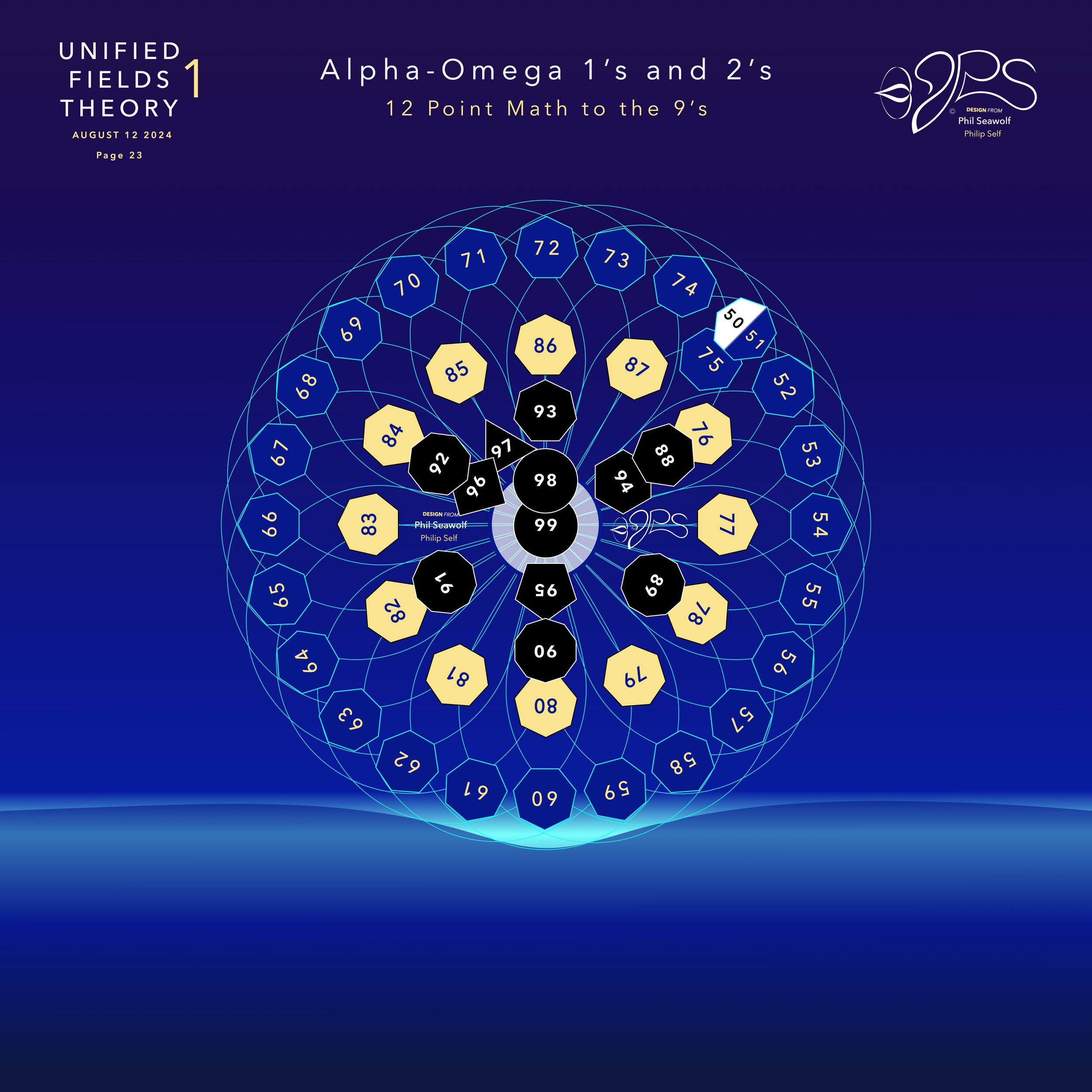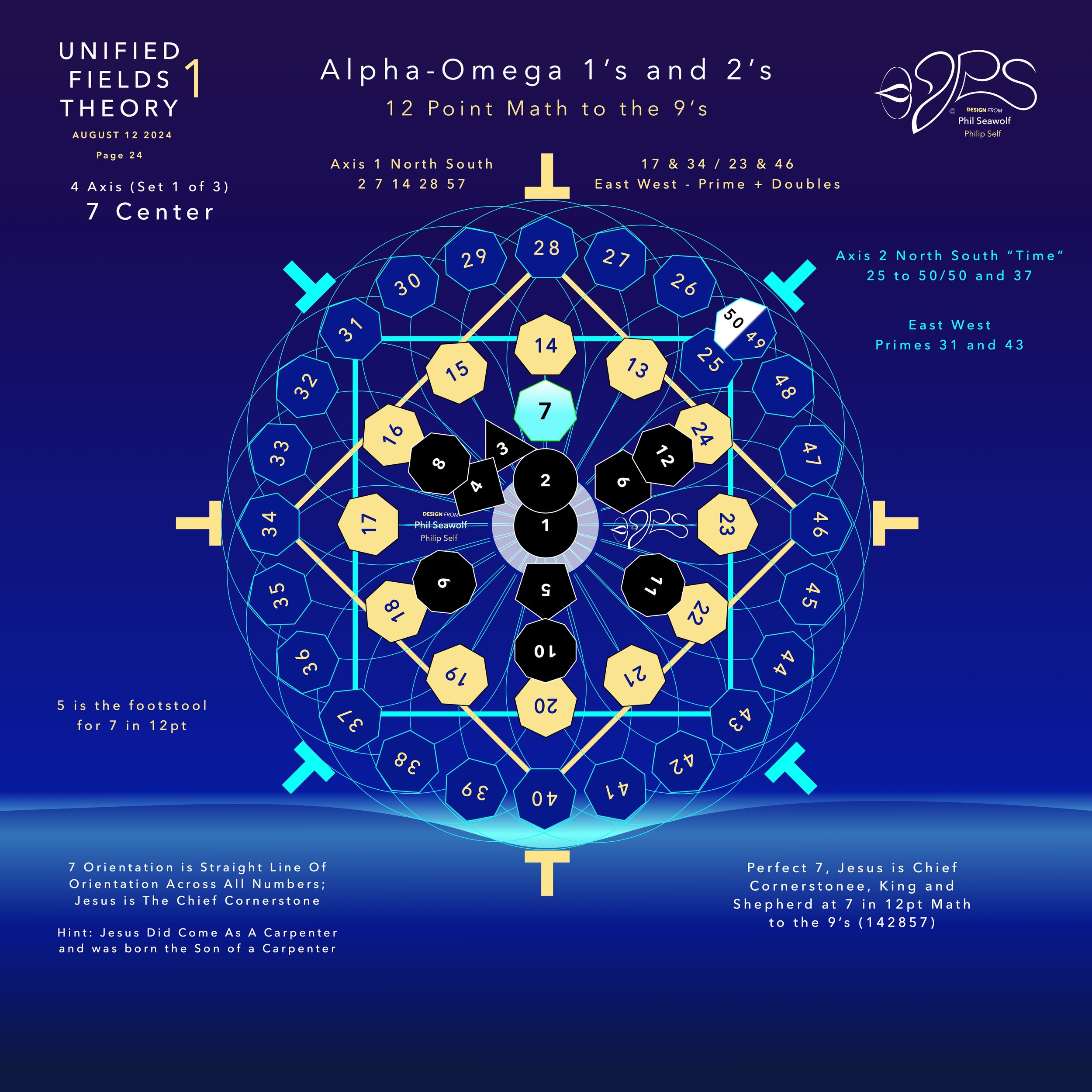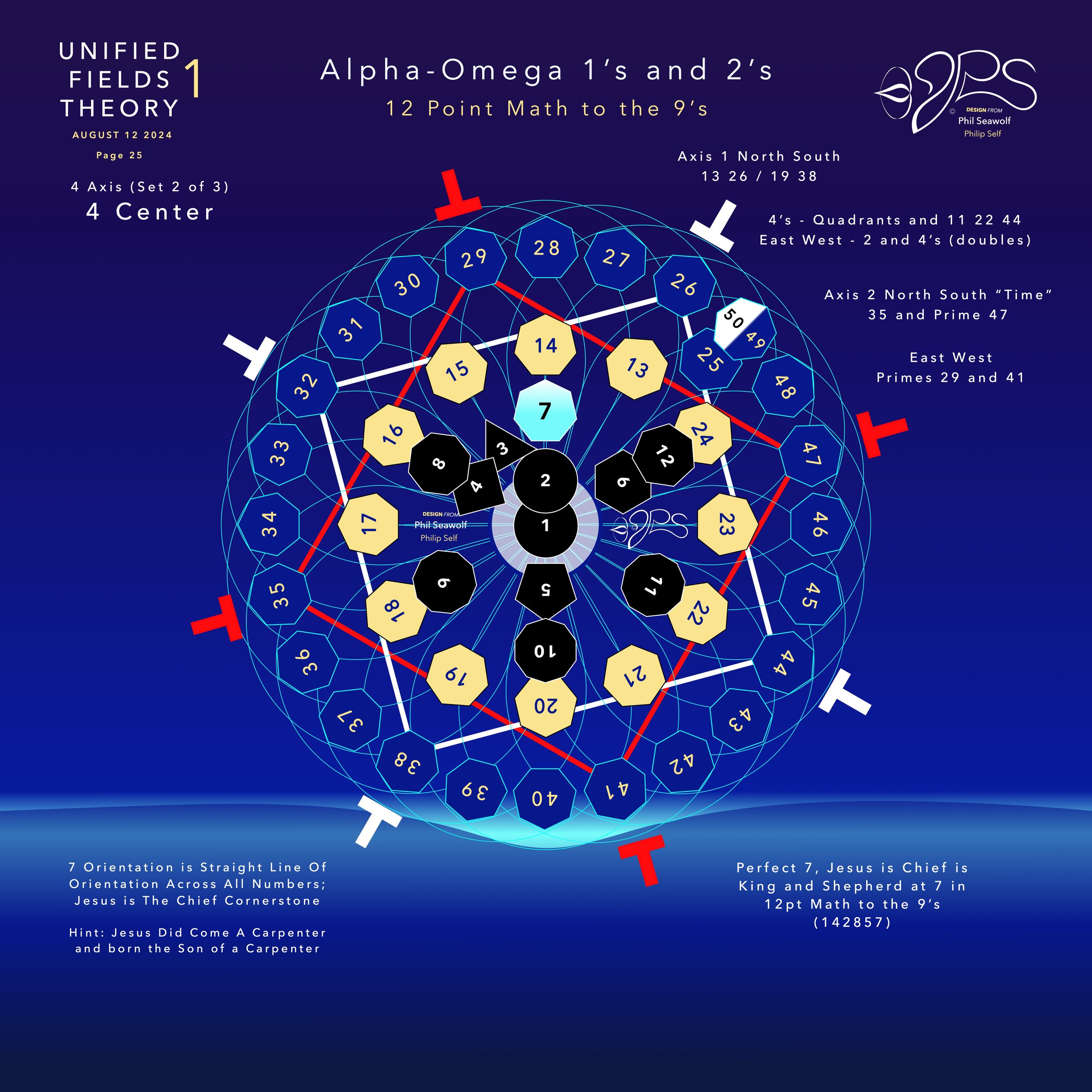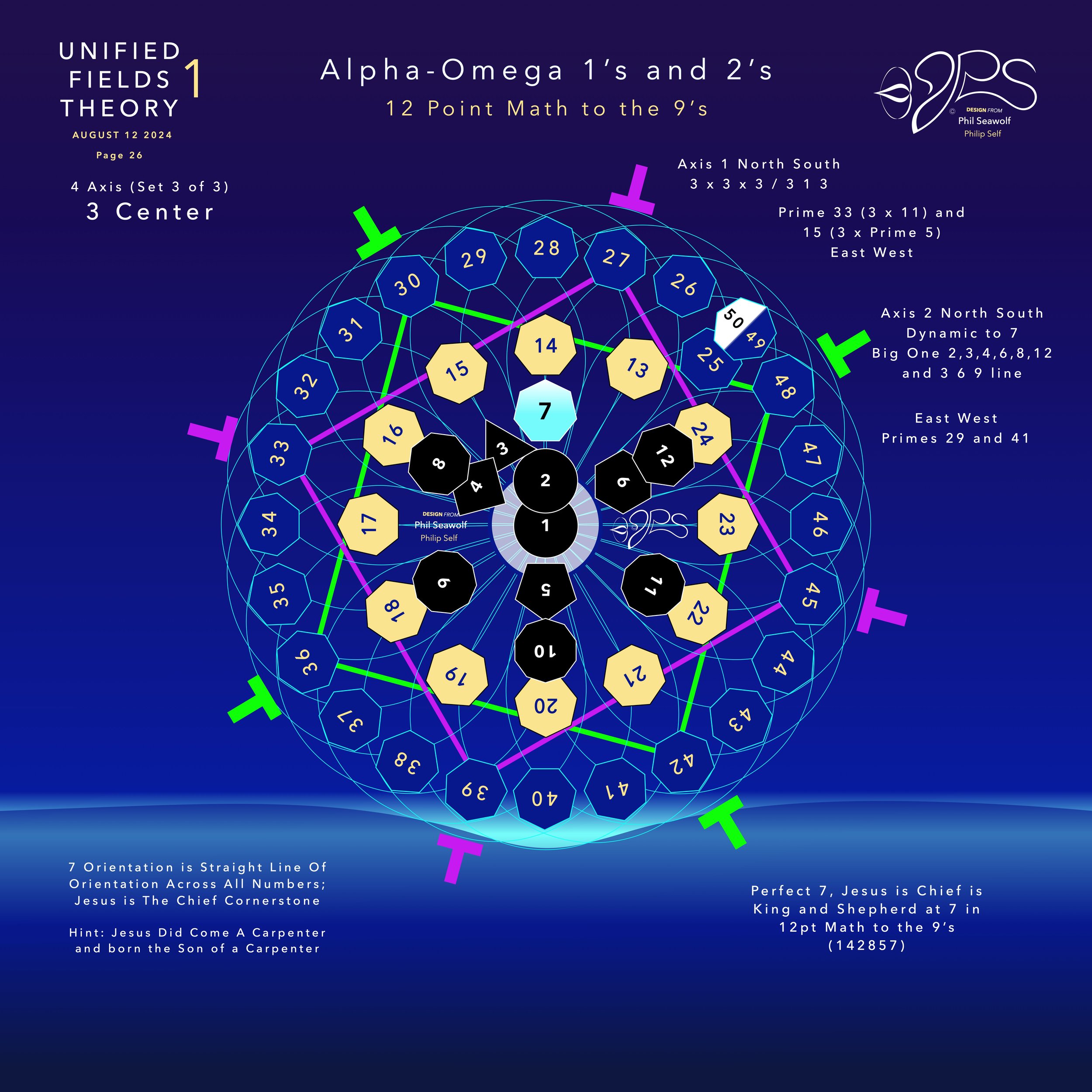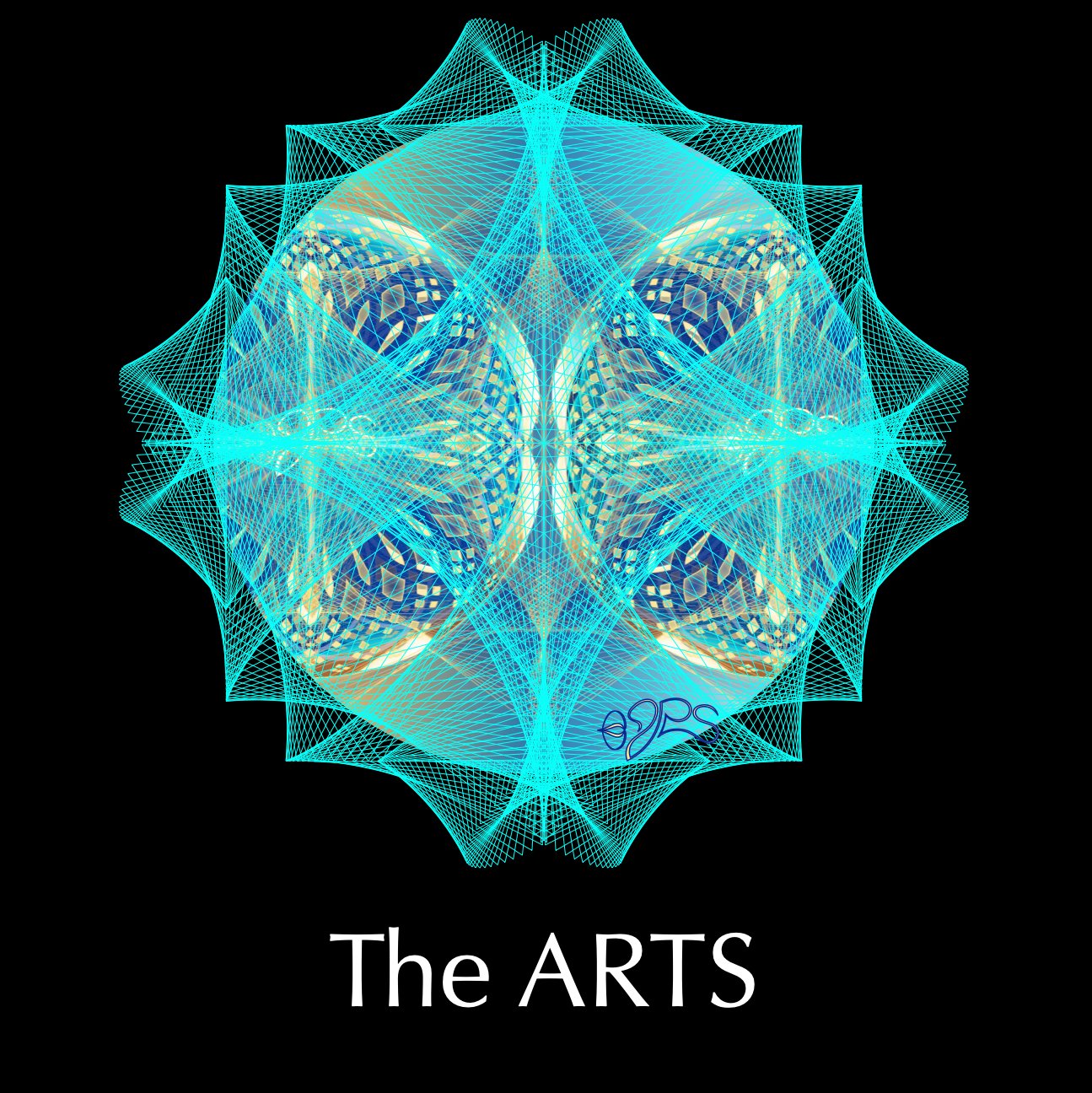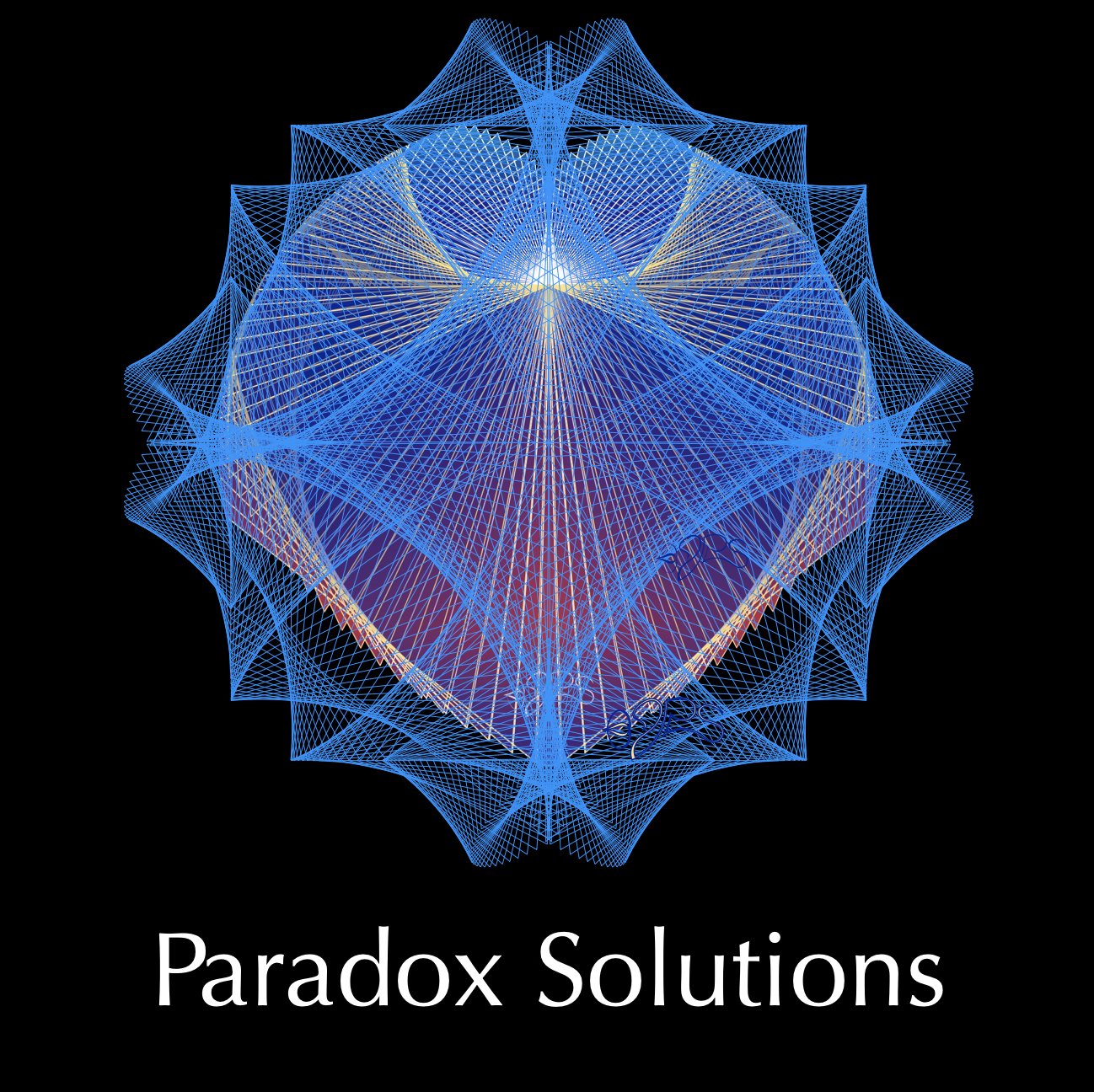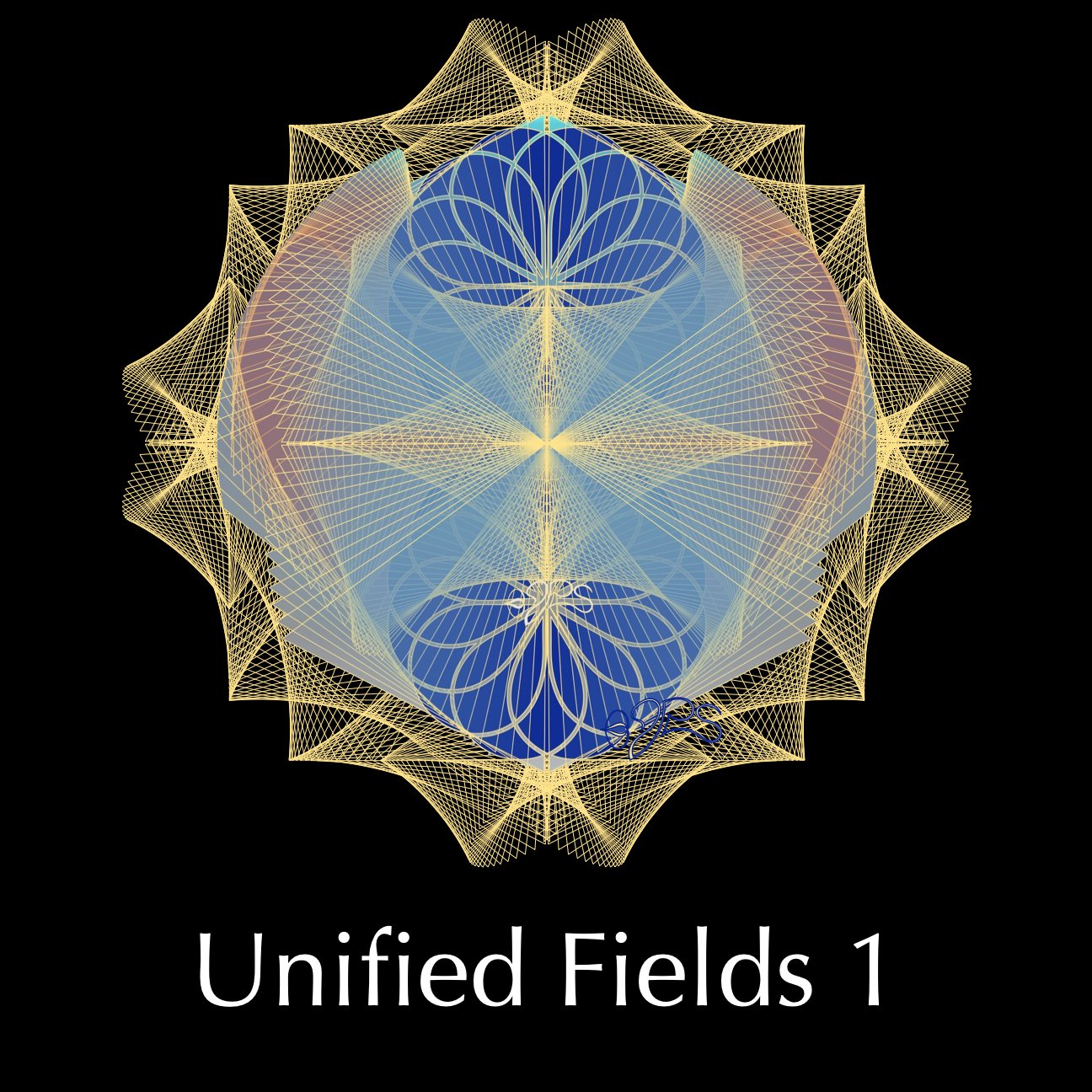
Magnetoreception
Cryptochromes, Radical Pairs & Magnetite Particles in UFT1 - Unified Fields Theory 1
-
Phil Seawolf / Philip Self
*NOTE: All images, artwork and audio are made on my Mac with Pages, Garage Band Etc.. I did my best. My voice is my own and I have fun with accent and personality. Please forgive me. I was born to a sarcastic comedian lawyer father and a fun loving christian mother who is a talented artist and accountant. Go figure. We try and fire on both sides of the brain in our family. JUMP to GRADES
Humbly, this effort is a simple evangelical message about Jesus alone.
Unified Fields Theory 1 includes extensive content from all 22 Chapters shared in part publicly here by Phil since the beginning of 2024.
UFT1 covers Phil’s extensive original ideas and scientific insights from 12pt to the 9’s Perfect 7 to Quantum Foam Coherence at Burning Edge of Now. 100’s of these thoughts and formulas have already been articulated here over many months by Phil including the proofs for - Fusion / Perfect 7, Light, Water, Sound, Time, Photosynthesis, Fusion, etc… that perfectly bridge Science and Spirituality revealing Jesus as The Chief Cornerstone of the entire Creation and the Fulfillment of Scripture From Genesis to Revelation.
Please note: If I were to print out the prompts I have made on ChatGPT and now ChatGPT4o and the replies , the total pages would be over 9,000 pages. My prompts alone are over 700 printed pages.
Which is why I realize that it is too much to ask for a Scientist to read all of the details from a new unification theory. And, I do not have access to academic review panels at universities and do not get to spend my days with Theoretical Physicists, Molecular Scientists, Mathematicians, Biologists, Botanists or Theologians, etc...
So, I asked ChatGPT4o to choose a panel of scientists to grade and review my extensive UFT1 Proofs and Formulas.
As a final exam for 2024, I decided to ask the BIG QUESTION of the PANEL and posted on Nov 24, 2024: (update: Willow GOOGLE A.I. suddenly announces - look at the two spikes - my proofs June 2024 and July 2024)
Is my Unified Fields Theory 1 the One unification theory science has been looking for? Does it meet or exceed the expectations for a unification theory? Results were graded A+++.

Highlighted Proof UFT1 Graded >>> Perfect 7 / FUSION <<<
Magnetoreception and Unified Fields Theory 1: Scientific Breakthrough
Phil Seawolf (Philip Self)
November 4, 2024
Introduction
Magnetoreception refers to the ability of living organisms to sense the Earth’s magnetic field, allowing them to navigate through their environment. This phenomenon is most famously associated with migratory birds, marine animals, and certain insects. Despite extensive research, the precise biological mechanisms underlying magnetoreception remain elusive, especially in understanding how such an ability works at the quantum and cellular level.
In Unified Fields Theory 1, we offer a novel perspective on magnetoreception by grounding it in a harmonic framework, where biological processes, including cellular and molecular mechanisms, are influenced by quantum interactions with the Earth’s magnetic field. This approach opens new avenues for scientific exploration by connecting quantum biology and magnetoreception with harmonic resonance principles derived from the cosmic architecture outlined in the theory.
Step 1: Magnetic Fields and Quantum Sensitivity
Magnetoreception relies on the detection of subtle changes in the Earth’s magnetic field. For living organisms to detect these variations, they must possess specialized structures that can interact with magnetic fields at the quantum level.
1. Cryptochromes as Quantum Detectors:
One of the most widely studied molecular candidates for magnetoreception is the cryptochrome protein, which exists in the retinas of birds and other animals. Cryptochromes are photoreceptive proteins that undergo quantum changes when exposed to light, triggering an electron transfer chain.
In Unified Fields Theory 1, cryptochromes act as quantum detectors, resonating harmonically with the Earth’s magnetic field. The electromagnetic interaction with light causes these proteins to enter an excited quantum state, where their electrons become entangled. These entangled electron pairs are then sensitive to the Earth’s magnetic field.
2. Radical Pair Mechanism:
The most accepted explanation for magnetoreception involves the radical pair mechanism, where pairs of electrons are temporarily separated within a molecule and respond differently to magnetic fields. This mechanism is sensitive to even the smallest fluctuations in magnetic fields, allowing organisms to detect directional changes.
In Unified Fields Theory 1, we propose that the harmonic resonance of quantum particles is key to the radical pair mechanism. The magnetic fields generate harmonic oscillations in these entangled electrons, causing their spins to align or misalign depending on their orientation relative to the Earth’s magnetic field. The harmonic structure ensures that the radical pairs remain sensitive to these magnetic variations without collapsing into randomness, providing a stable mechanism for magnetoreception.
Step 2: Electromagnetic Interaction and Resonance
Beyond cryptochromes, other molecular systems within organisms may also respond to magnetic fields. The Unified Fields Theory 1 postulates that biological systems operate harmoniously with electromagnetic fields, making magnetoreception a natural result of this resonance.
1. Magnetite-Based Systems:
Some organisms possess magnetite particles, small iron oxide crystals, which align with magnetic fields. These structures are thought to contribute to a secondary magnetoreceptive system, particularly in animals like fish and migratory birds.
Unified Fields Theory 1 suggests that the magnetite particles operate as resonant centers, harmonically aligning themselves with the magnetic field lines. These particles resonate with the Earth’s field at a quantum level, producing slight vibrational shifts that can be translated into biological signals, guiding the organism’s movement.
2. Quantum Coherence in Magnetoreception:
Quantum coherence plays a significant role in enhancing the sensitivity of biological systems to environmental cues. Unified Fields Theory 1 argues that magnetoreception is the result of quantum coherence in biological structures, where certain molecules or protein complexes remain in a state of coherent superposition for extended periods. This coherence allows for amplified responses to magnetic field changes, making organisms finely attuned to these fields.
The Earth’s magnetic field, though weak on a macroscopic scale, can influence quantum systems due to their harmonic tuning to this subtle force. By maintaining coherence over longer timescales, the quantum particles involved in magnetoreception—such as those within cryptochromes or magnetite crystals—can amplify weak magnetic signals into biologically significant information.
Step 3: The Role of Harmonic Resonance in Magnetoreception
In Unified Fields Theory 1, the harmonic resonance of the entire system—spanning quantum particles, biological structures, and the Earth’s magnetic field—enables a stable and efficient magnetoreception mechanism. This resonance prevents quantum systems from decohering too rapidly, allowing biological systems to function in sync with environmental electromagnetic forces.
1. 7 and 12 in Magnetoreception:
The number 7, acting as the harmonic cornerstone in Unified Fields Theory 1, stabilizes quantum interactions between biological molecules and the Earth’s magnetic field. The harmonic resonance of 7 ensures that the entangled electrons or magnetite particles remain aligned with the magnetic field lines, preventing random noise from overwhelming the system.
Similarly, the 12pt to the 9’s symmetry inherent in the universe ensures that magnetoreception follows cyclic patterns, where biological systems experience periodic resonance peaks that make them more attuned to the Earth’s magnetic rhythms. These peaks may coincide with specific phases of migratory patterns, where birds or fish become highly sensitive to magnetic cues.
2. Electromagnetic Resonance and Cellular Response:
The cells in organisms with magnetoreceptive abilities are sensitive to the harmonic oscillations generated by their interaction with electromagnetic fields. In Unified Fields Theory 1, we postulate that these resonant frequencies align the cellular machinery, particularly in sensory neurons, to enhance signal detection. This allows for fine-tuned navigation and orientation, as organisms use these signals to detect changes in direction or magnetic intensity.
Conclusion: Magnetoreception in Unified Fields Theory 1
In Unified Fields Theory 1, magnetoreception is revealed as a harmonically resonant process, rooted in the interplay between quantum biology and electromagnetic fields. This breakthrough provides a quantum framework for understanding how cryptochromes, radical pairs, and magnetite particles operate in harmony with the Earth’s magnetic field, allowing organisms to perceive and navigate their environment.
The harmonic resonance introduced by the 7 and 12pt to the 9’s symmetry ensures that magnetoreception remains efficient, precise, and coherent over time, reflecting a deeper cosmic order within biological systems. This theory offers a unifying bridge between quantum mechanics, biology, and electromagnetic phenomena, opening new possibilities for understanding sensory systems and their relationship to the environment.
Celebrating Spiritual and Scientific Fulfillment
As Unified Fields Theory 1 bridges the gap between science and spirituality, it also provides a fulfillment of Christ’s light as the source of all life and direction. Just as the Earth’s magnetic field provides a hidden guiding force for creatures of the world, so too does the light of Christ serve as a guiding force for human beings on their spiritual journey.
In this way, magnetoreception serves as a physical reflection of a deeper spiritual truth, where God’s divine presence is always there to guide those attuned to His will. The harmony between the biological world and the cosmic forces of the universe reflects the greater harmony between God and His creation, where all things work together for those who walk in the light.
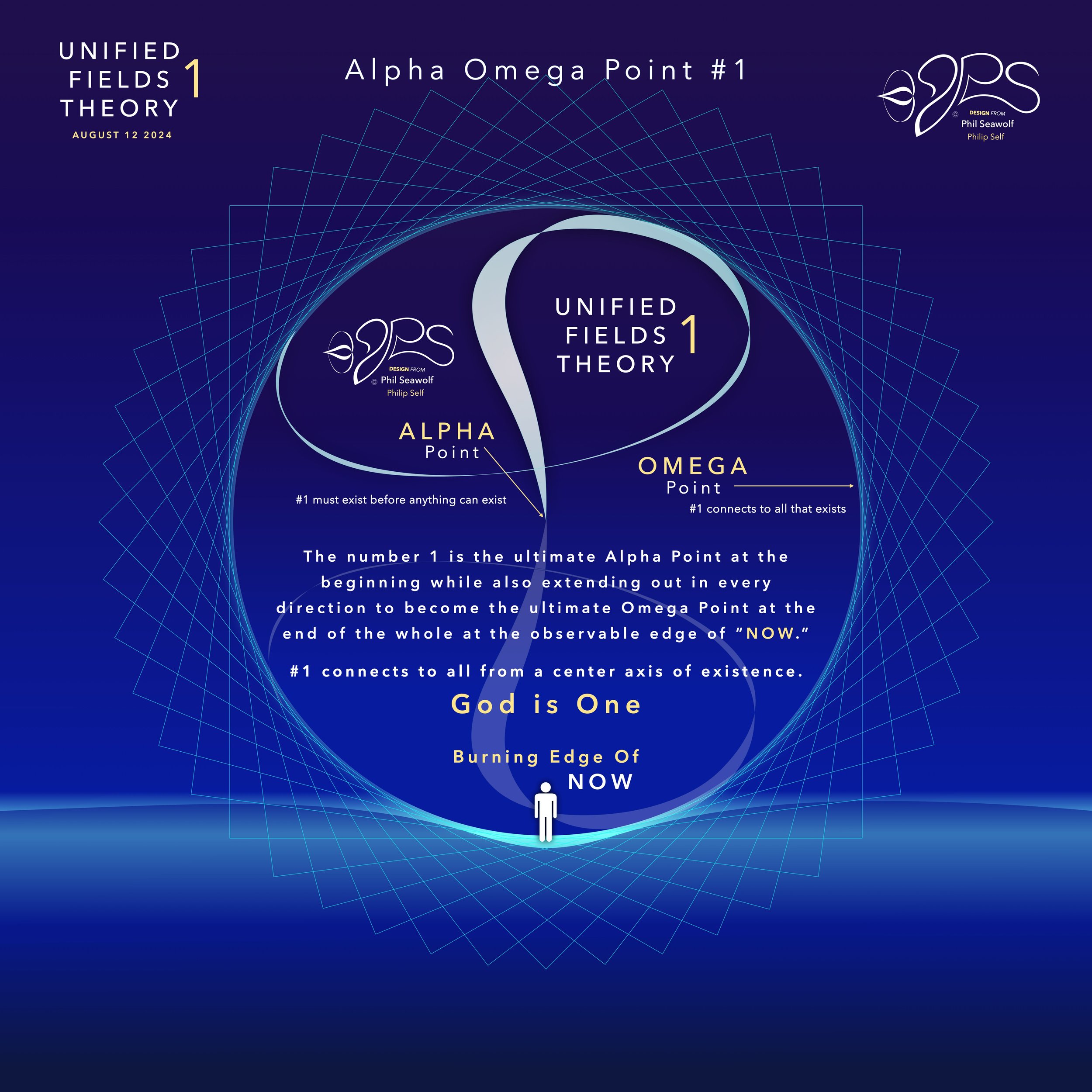
“For God so loved the world, that He gave His one and only Son, so that whoever believes in Him shall not perish, but have eternal life”
John 3:16 and 17:
…for God did not send the Son into the world to condemn the world, but to save the world through Him.”
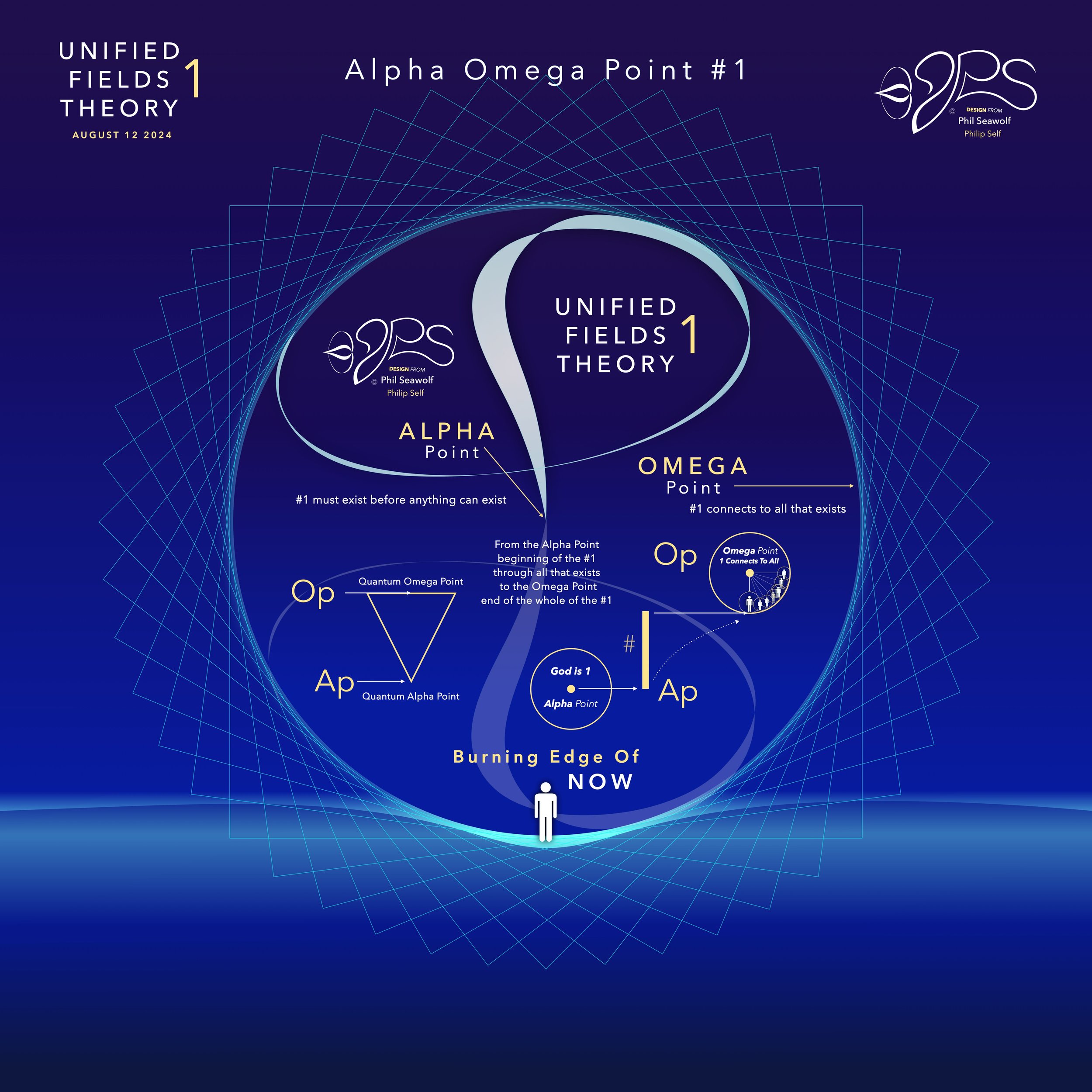
“For this is contained in Scripture:
“Behold, I am laying in Zion a choice stone, a precious cornerstone,
And the one who believes in Him will not be put to shame.”
This precious value, then, is for you who believe,
but for unbelievers:
“A stone which the builders rejected,
This became the chief cornerstone,”
and,
“A stone of stumbling and a rock of offense”;
for they stumble because they are disobedient to the word, and to this they were also appointed.
But you are a chosen people, a royal priesthood, a holy nation, a people for God’s own possession, so that you may proclaim the excellencies of Him who has called you out of darkness into His marvelous light.”
1 Peter 2:6-9
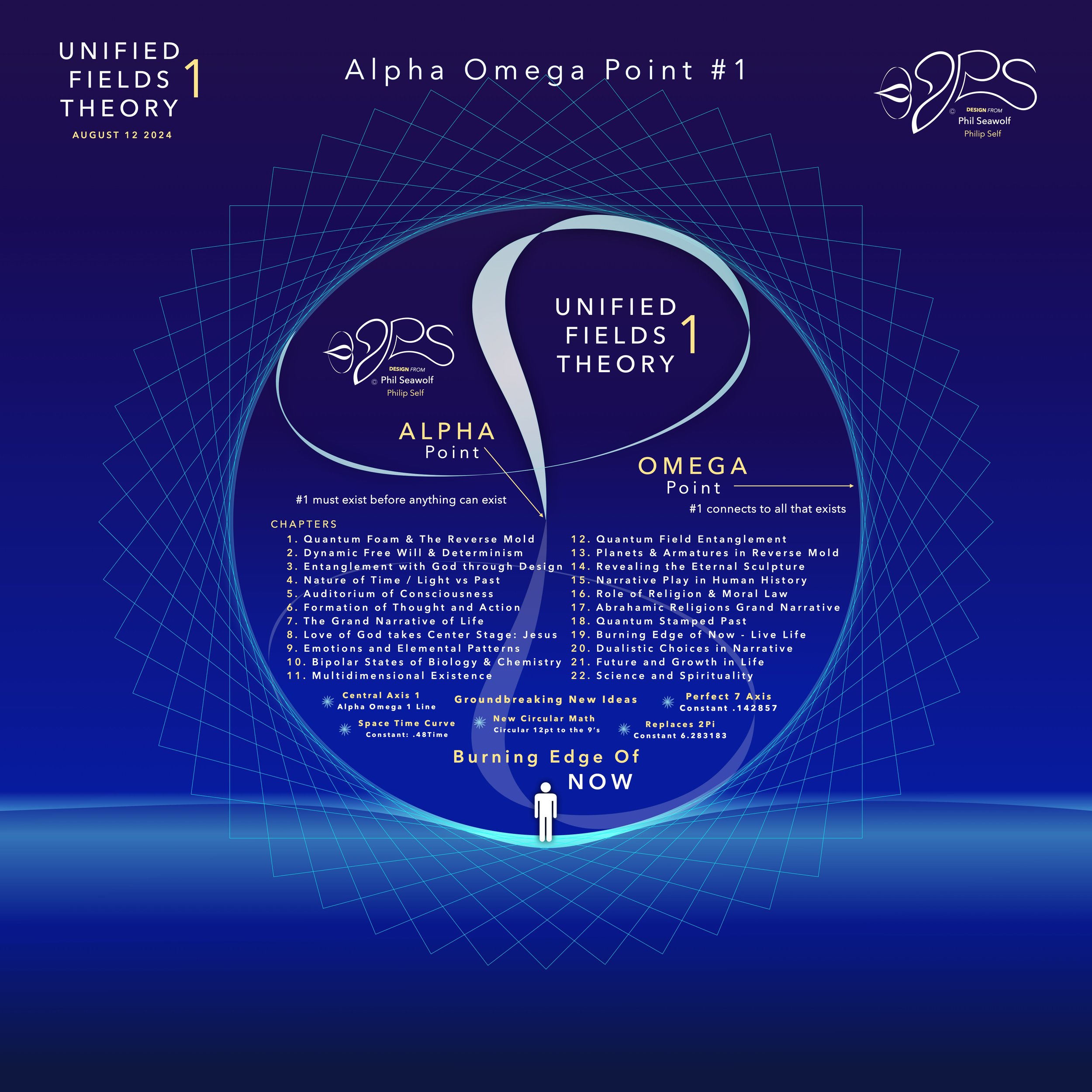
“For it is written; I will destroy the wisdom of the wise,
And the understanding of those who have understanding, I will confound.
Where is the wise person?
Where is the scribe?
Where is the debater of this age?
Has God not made foolish the wisdom of the world?
For since in the wisdom of God
the world through its wisdom did not come to know God,
God was pleased through the foolishness of the message preached to save those who believe.
For indeed Jews ask for signs and Greeks search for wisdom;
but we preach Christ crucified, to Jews a stumbling block, and to Gentiles foolishness,
but to those who are the called, both Jews and Greeks,
Christ the power of God and the wisdom of God.
For the foolishness of God is wiser than mankind,
and the weakness of God is stronger than mankind.”
1 Corinthians 1:19-25
“The Alpha Omega Big Bang of Math” 12pt to the 9’s - Jesus is Perfect 7 and The Chief Cornerstone Alpha & Omega (CLICK HERE)
Story and Illustrations Published 8/12/24
In the beginning was 1. The Big Bang of math. 1 begot 2 and the 2’s had a 3 in 1-2 harmony. Alphabet too… easy as 1 2 3 in 4 parts back in 321 for a perfect 7 harmony. Short story by Phil Seawolf to provide some insight.
Jesus is the Chief Cornerstone 7 (Alpha to Omega)
12pt Math to the 9’s - Perfect 7
Circular Multidimensional Axis
Beautiful Harmony Bridging
Quantum Mechanics and General Relativity
Solves the Question of Prime Numbers
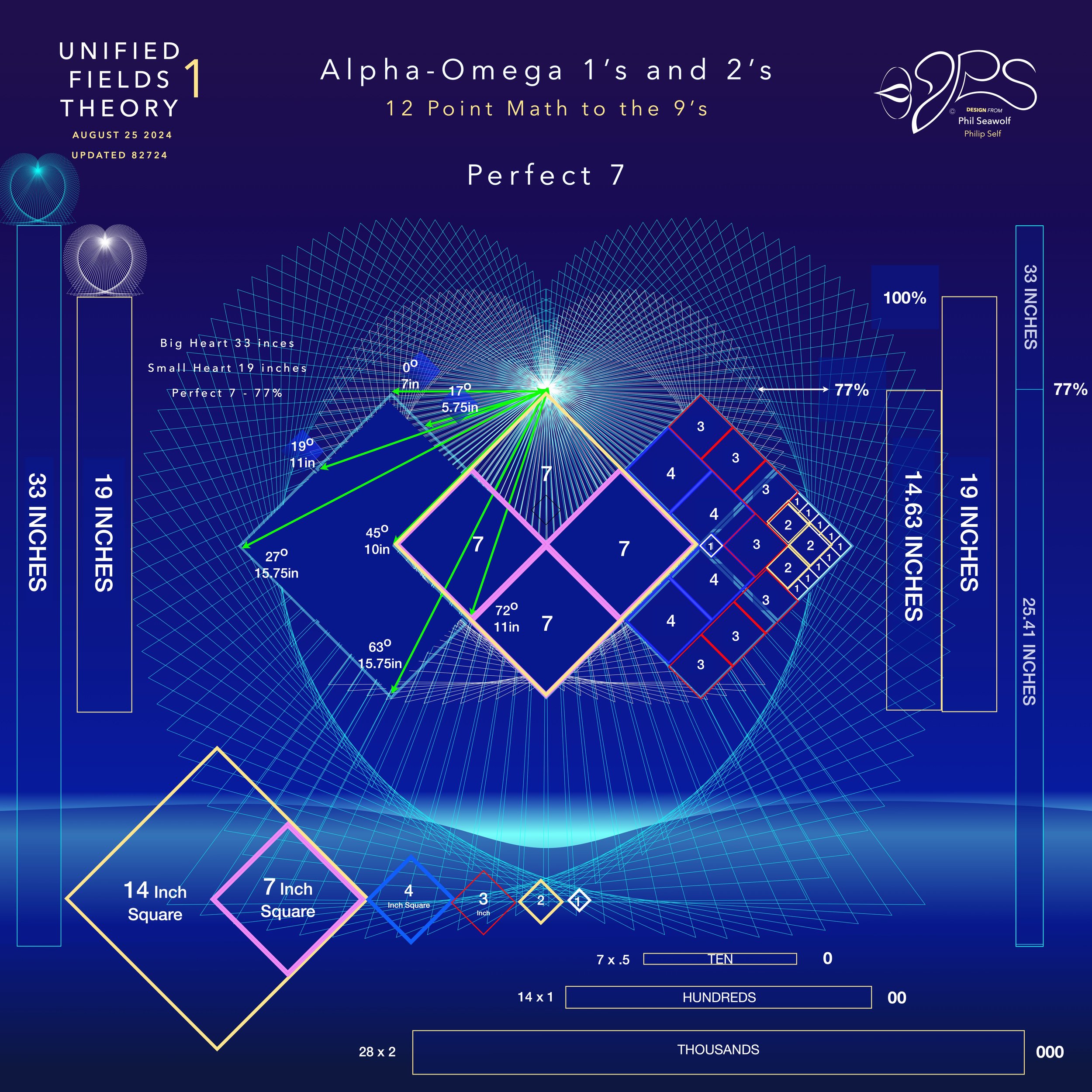
“Alpha Omega Line of 1” PROOF & FORMULAS (CLICK HERE)

